I am in the possession of the most guarded secret in Italy – the 2019 report of the research misconduct investigation by the University of Ferrara against their own rector, Giorgio Zauli. Which he banned from seeing the light of the day and declared null and void. The irony – the report fully whitewashed Zauli!
Many suspected the secret report was devastating and damning for the Rector Magnificus of one of the oldest universities in the world. But I rather suspected it was nothing but the usual kind of whitewashing, and it indeed was: a few mistakes were made, but no intent, no misconduct, conclusions not affected and Zauli personally not responsible. If anything, the report was excessively servile, grovelling and obsequious. In fact, it was clearly snivelling. But this boot-licking was not enough for Zauli. Because this man is an unhinged psychopath and a tyrant with far-right connections, he presumably expected the ethics commission to declare all PubPeer allegation as malicious slander and himself an innocent victim of a conspiracy by Schneider, the lying media, and other critics like Bologna professor Lucio Picci whom Zauli publicly equalled to Goebbels.
Floppy “Goebels” Zauli and the fascists of Ferrara
University of Ferrara rejected a journalist’s FOI request about the investigation of its own Rector. The arguments: the media is biased and drives a slander campaign against Giorgio Zauli, and in any case, his research can only be evaluated in a “Science Court” by peer review.
Which is why Zauli and his henchmen in Ferrara (led by his trusty director-general Giuseppe Galvan) rejected the ethics commission’s request to publicise its findings, and instead had the report banned and destroyed, and the ethics commission dissolved. A mandatory signature campaign was organised at the university in support of Zauli, and the Rector Magnificus himself set off to get my reporting deleted by complaining to Italian privacy protection authorities. He announced to sue me and deployed lawyers against his critics in Italy. Including against the Milan-based journalist Sylvie Coyaud who was fined by Italian state prosecutor on behalf of Zauli – for being Leonid Schneider. Seriously. No, I am not misinterpreting or exaggerating. In fact, there are apparently legal proceedings in Italy against me from another Italian medicine professor for my being Sylvie Coyaud.
Gabrio Bassotti: snip-snip and copy-paste surgeon
Gabrio Bassotti’s gang uses patients as a source of research material: no consent or ethics approval needed. The patients are real, but the research results are fake.
In 2021, Zauli’s rectorship term ended, the new university leadership continues terrorising Zauli’s critics even today, as I learned first-hand.
Well, here is that report from 10 January 2019 the Ferrara mafia had been hiding deep in their bums all these years.
As the report reiterates, my original notification of suspected research misconduct was actually inadmissible, because according to the ancient and divine rules of Ferrara, only university’s employees or students can report misconduct and never the outsiders. This is a clever rule which not only protects fraud but also probably got a number of internal whistleblowers sacked – a mere formality to prevent an investigation. But since my reporting was picked by by a local journalist Daniele Oppo and his newspaper L‘Estense, it was also difficult to just ignore the affair. Thus, Zauli selected 10 papers out of around 30 flagged on PubPeer at that time (it’s 45 now, and probably could have been more hadn’t the sleuths got bored of inaction and moved on). According to the now available report, those 10 papers were selected from my initial article about Zauli’s fabricated cancer research:
Flawed cytometry of Rector Giorgio Zauli
Giorgio Zauli is Italian clinical haematologist and cancer researcher, Rector of the respected University of Ferrara. In this position he might soon be investigating his own papers for suspected data manipulation.
From the report, Google-translated:
“With this documentation — also made temporarily available for viewing by all University employees — Prof. Zauli intends to respond to the accusations made against him by Mr. Leonid Schneider who, qualifying as an independent journalist with a specialty in ethics of research, had published on his web page (For Better Science) a report alleging manipulations of data from flow cytometry and western blot experiments in ten scientific products published between 1998 and 2009 by Profs. George Zauli and Paola Secchiero, both from the University of Ferrara. The Ethics Commission was informed of this report by Mr. Schneider, through two emails sent to its President on May 15, 2018.”
These are presumably the papers they investigated:
- Paola Secchiero, Elisabetta Melloni , Mario Tiribelli, Arianna Gonelli , Giorgio Zauli Combined treatment of CpG-oligodeoxynucleotide with Nutlin-3 induces strong immune stimulation coupled to cytotoxicity in B-chronic lymphocytic leukemic (B-CLL) cells Journal of Leukocyte Biology (2008) doi: 10.1189/jlb.0707459
- Paola Secchiero, Carlotta Zerbinati , Elisabetta Melloni , Daniela Milani , Diana Campioni , Roberto Fadda , Mario Tiribelli, Giorgio Zauli The MDM-2 antagonist nutlin-3 promotes the maturation of acute myeloid leukemic blasts Neoplasia (2007) doi: 10.1593/neo.07523
- Paola Secchiero, Federica Corallini , Arianna Gonelli , Raffaella Dell’Eva , Marco Vitale , Silvano Capitani , Adriana Albini , Giorgio Zauli Antiangiogenic activity of the MDM2 antagonist nutlin-3 Circulation Research (2007) doi: 10.1161/01.res.0000253975.76198.ff
- Giorgio Zauli, Erika Rimondi , Federica Corallini , Roberto Fadda , Silvano Capitani , Paola Secchiero MDM2 antagonist Nutlin-3 suppresses the proliferation and differentiation of human pre-osteoclasts through a p53-dependent pathway Journal of Bone and Mineral Research (2007) doi: 10.1359/jbmr.070618
- D Gibellini , A Bassini , S Pierpaoli , L Bertolaso , D Milani , S Capitani , M La Placa , G Zauli Extracellular HIV-1 Tat protein induces the rapid Ser133 phosphorylation and activation of CREB transcription factor in both Jurkat lymphoblastoid T cells and primary peripheral blood mononuclear cells The Journal of Immunology (1998) PMID: 9558095
- G Zauli, D Gibellini , P Secchiero, H Dutartre , D Olive , S Capitani , Y Collette Human immunodeficiency virus type 1 Nef protein sensitizes CD4(+) T lymphoid cells to apoptosis via functional upregulation of the CD95/CD95 ligand pathway Blood (1999) Feb 1;93(3):1000-10.
- Paola Secchiero, Federica Corallini , Erika Rimondi , Cristina Chiaruttini , Maria Grazia Di Iasio , Alessandra Rustighi , Giannino Del Sal, Giorgio Zauli Activation of the p53 pathway down-regulates the osteoprotegerin expression and release by vascular endothelial cells Blood (2008) doi: 10.1182/blood-2007-05-092031
By the way, I later wrote about this collaborator of Zauli’s – Giannino Del Sal. The Schneider Rule of finding science cheaters applies!
Claudio and Giannino evaluate and analyze
“together with my colleagues we are actively analyzing the points raised on pubpeer.” – Claudio Schneider “we will evaluate Pubpeer comments” – Giannino Del Sal
Continuing with the list!
- Paola Secchiero, Elisa Barbarotto , Arianna Gonelli , Mario Tiribelli, Carlotta Zerbinati , Claudio Celeghini , Claudio Agostinelli , Stefano A. Pileri , Giorgio Zauli Potential pathogenetic implications of cyclooxygenase-2 overexpression in B chronic lymphoid leukemia cells American Journal Of Pathology (2005) doi: 10.1016/s0002-9440(10)61244-8
- Paola Secchiero, Elisa Barbarotto , Mario Tiribelli, Carlotta Zerbinati , Maria Grazia Di Iasio , Arianna Gonelli , Francesco Cavazzini , Diana Campioni , Renato Fanin , Antonio Cuneo , Giorgio Zauli Functional integrity of the p53-mediated apoptotic pathway induced by the nongenotoxic agent nutlin-3 in B-cell chronic lymphocytic leukemia (B-CLL) Blood (2006) doi: 10.1182/blood-2005-11-4465
I counted 9 papers in my article, but Zauli reported 10 to his Ethics Commission for investigation. The above were all faux cytometry threads, with some very fake western blots. The Ethics Commission of Ferrara had six meetings in total in June-July 2018 and in November 2018 – January 2019. It also requested assessments from two unnamed external experts (both Italian) which were provided between August and October 2018. As a result, even the very benevolent commission had to admit there were some unresolved issues:
“The alleged violations of the Code of Ethics emerging from the matter that was the subject of the two instances, therefore, were assessed — at a preliminary stage — as not manifestly unfounded.”
This is what the two unnamed external experts determined:
“As for the first report, of the 10 publications examined, only 4 contain experimental data obtained with western blot methods. None of them present any anomalies of any kind: Prof. Zauli’s counter-deductions turn out to be documented, complete, persuasive. The scientific data thus obtained and used in publications are reliable.
As for the second report, of the 10 publications examined, only 7 contain experimental flow cytometry data. In 1 of them a material error is not excluded, while in the remaining 6 it is possible to hypothesize duplications of the same images in different scientific works, with possible repercussions on the reliability of the specific assumption (and related conclusions) for the demonstration of which the contested figure is offered.”
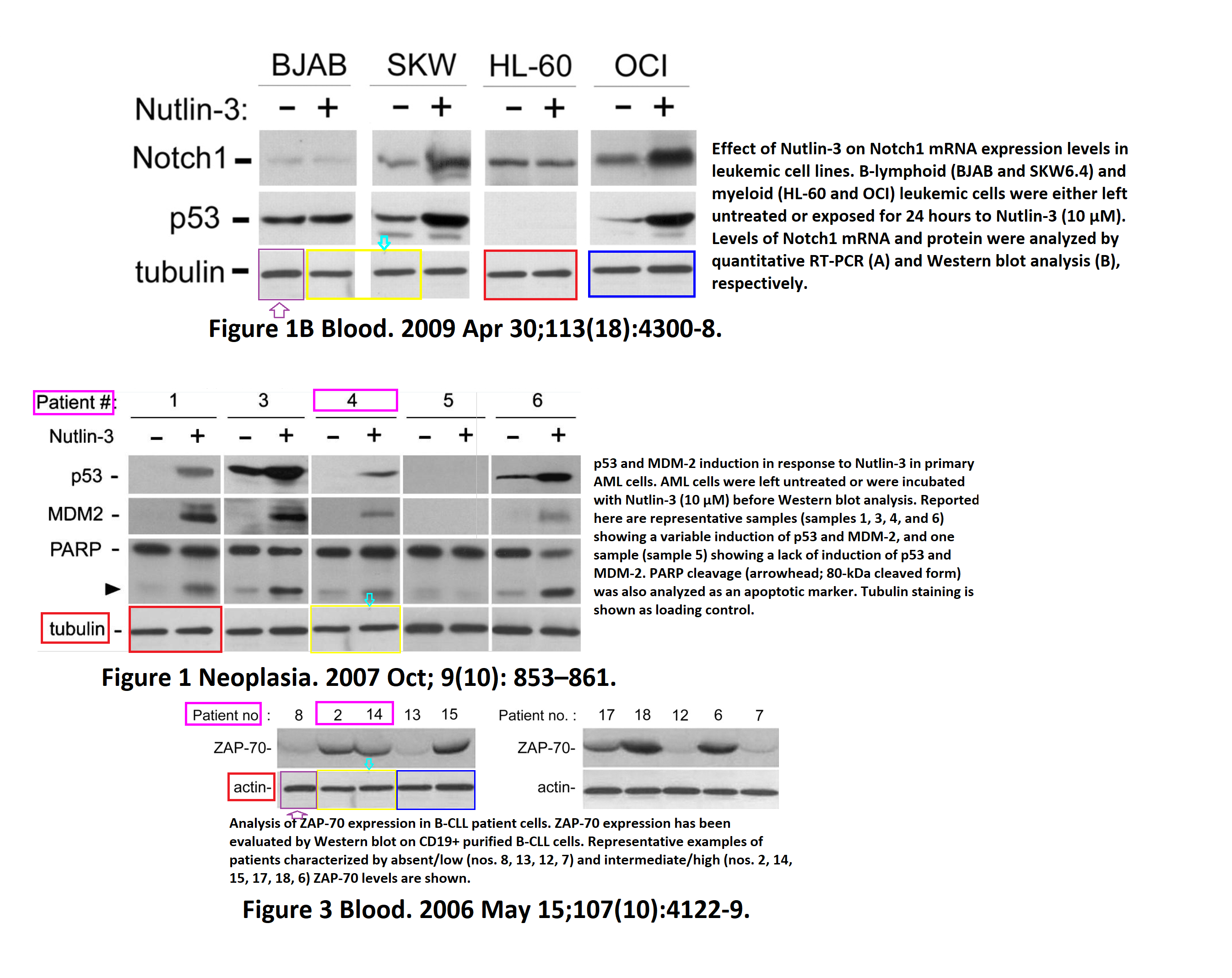
The western blots were not exactly free from anomalies – they were simply fake. Zauli’s blots were not just forged inside each paper, they were recycled across various studies in different context. And the detailed analysis was on PubPeer even before the investigation began. But this is exactly why Italian peers were invited to do the whitewashing.


The Ethics Commission consisted of Ferrara professors Andrea Pugiotto (who later sued Zauli’s henchman Guiseppe Galvan for defamation, read here) and Gian Mattero Rigolin, plus faculty members Cristina Munari, Paola Migliori and Edoardo Luigi Manfra, assisted by Cinzia Mancini. Rigolin had a clear Conflict of Interests – he published some papers with Zauli, one of them is on PubPeer and is proven to contain manipulated data:
Giorgio Zauli, Rebecca Voltan , Raffaella Bosco , Elisabetta Melloni , Sandra Marmiroli , Gian Matteo Rigolin , Antonio Cuneo , Paola Secchiero Dasatinib plus Nutlin-3 shows synergistic antileukemic activity in both p53 wild-type and p53 mutated B chronic lymphocytic leukemias by inhibiting the Akt pathway Clinical Cancer Research (2011) doi: 10.1158/1078-0432.ccr-10-2572

Editor’s note 1 July 2022: “The editors are publishing this note to inform readers of a concern about this article (1). Figures 3A and 4B contain three sets of similar tubulin control panels: the left panels of Fig. 3A MEC-2 tubulin and the P-ERK 1/2 tubulin panels in Fig. 4B; the right panels of Fig. 3A JVM-2 tubulin and the P-p38 tubulin panels in Fig. 4B; and the right panels of Fig. 3A BJAB tubulin and the P-Akt tubulin panels in Fig. 4B.“
That paper was flagged in May 2018, so the Commission knew about it. It was of course exempt from investigation and the ethics expert Rigolin remained on board of the Commission, but was asked not to vote:
“the Commission does not find the existence of causes impeding Prof. Rigolin’s participation in the present procedure […] as a precaution Commission decides that Prof, Rigolin, without prejudice to his legitimate participation in this procedure, must however “abstain, in any case, from any deliberations or decisions in merit””
This was Zauli’s defence:
“The following day, on 24 November 2018, Prof. Zauli sent a letter to the attention of the President of the Ethics Commission (and the Deputy Pro-Rector). […] In the letter some reservations are formulated about the outcome of the expertise concerning data experiments obtained with flow cytometry methods, […] In the at the same time, the letter does not exclude the possibility of material errors part of the same team of which Prof. Zauli was group leader, due to the considerable amount of scientific publications produced in the relevant time frame (117 international articles between 1998 and 2009), of the equipment in use at the time (FACScan with storing files in list mode), of the followed method of choosing from the general database of images to publish (however used for purely illustrative purposes of quantitative data shown in the table).
Regretting it, Prof. Zauli blames what happened to thoughtlessness and lack of accuracy in selection and assembly of the iconographic apparatus, categorically excluding this has altered — much less intentionally — the validity of the scientific knowledge of the performed research.
Lastly, he complains about the impossibility of tracing the original experimental data, since the material under examination, very dated, had been acquired with floppy disks formatted with a system (Pascal 3.22) which has long been discontinued and can no longer be used with any current instrumentation.”
Floppy disks, right. As a reminder, most of the investigated papers were published between 2005 and 2008. I did my MSc in 2002-2003 and PhD in 2003-2007 in Germany and arrived for postdoc in Milan, Italy in 2008. During that time I never saw a computer floppy disk anywhere. Zauli clearly made this claim up, and the Ethics Commission was more than willing to accept this bullshit lie.
La Piovra Ferrarese di Giorgio Zauli
Giorgio Zauli’s rectorship term ends. Will research fraud, media harassment and whistleblower persecution be a thing of the past at the University of Ferrara? Ma dai, basta cazzate.
Next, the Ethics Commission decided that the responsibility for investigations of data manipulation lies actually not with universities, but with the journals and publishers, and if those do nothing, then there is indeed nothing wrong with the paper:
“Following Mr. Schneider’s reports to the scientific journals which, between 1998 and 2009, published the ten articles under investigation, only one (Circulation Research) asked the Ferrara research group for clarification.”
The report informs that Zauli replied to the journal explaining that the 11 year old paper was too old to ask for raw data, but he “agreed that there has probably been a duplication of the same image, due to lack of accuracy during the relative assembly, moreover, not even recognized by the magazine’s editorial office“, and offered a replacement picture.
“The journal was satisfied with the clarification thus obtained, nor did it deem it necessary to publish the errata”
The paper Secchiero et al 2007 is completely fraudulent.


We are also educated that Giorgio Zauli is in fact the most diligent and honest scientist who ever lived:
“The process followed in the story reconstructed so far follows the correct procedure in the scientific field, which allows us to ascertain the reliability of published research. In claiming the absolute integrity of himself and his collaborators regarding the processing of scientific data, always carried out in triplicate when not in quintuple before its publication, Prof. Zauli states that if there were errors (as in the case illustrated), they haven’t in the slightest affected the validity of what was published (in this as in other articles).”
Yes, I am pretty sure he reused many FACS plots and western blots 3 or 5 times. Remember the flow cytometry from Secchiero et al 2007? Reused in 4 papers:
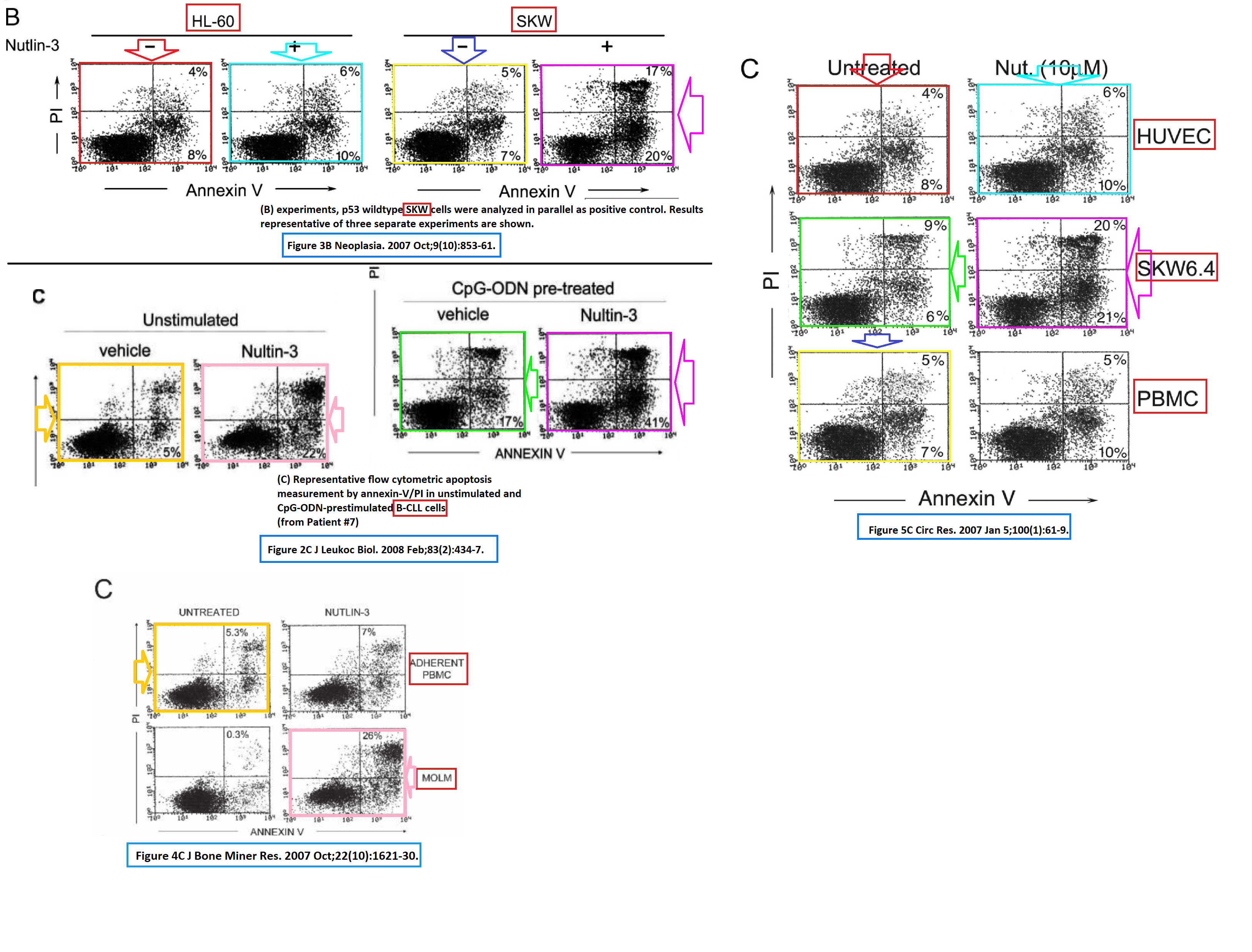
The evidence for those triplicates, quadruplicates and quituplicates was indeed there for all to see. So they had to be declared “clerical errors”:
“As for the material element of the alleged breaches of ethics, the Commission considers’ reasonably established the presence of errors in figures of flow cytometry experiments reproduced in some of the publications under review, in the form of duplications of the same images in different scientific papers.
This conclusion appears plausible in light of various investigative findings.
8.1. A clerical error was certainly ascertained in the publication hosted by the journal Circulation Research, following the described verification […] which took place in collaborative forms and according to consolidated practices in the scientific community
8.2. Clerical errors in other publications have been confirmed following the outcome of the report relating to the flow cytometry experiments assessed by the Ethics Commission […]
The possibility of similar clerical errors in others publications, finally, were not excluded even by Prof Zauli himself. “
The investigators then agreed with Zauli that is actually not appropriate to find duplications in the PDFs of published papers, this is only acceptable with the use of raw data and permission from lead authors. Thus, the gravity of the PubPeer finding was decided to be “reduced”.
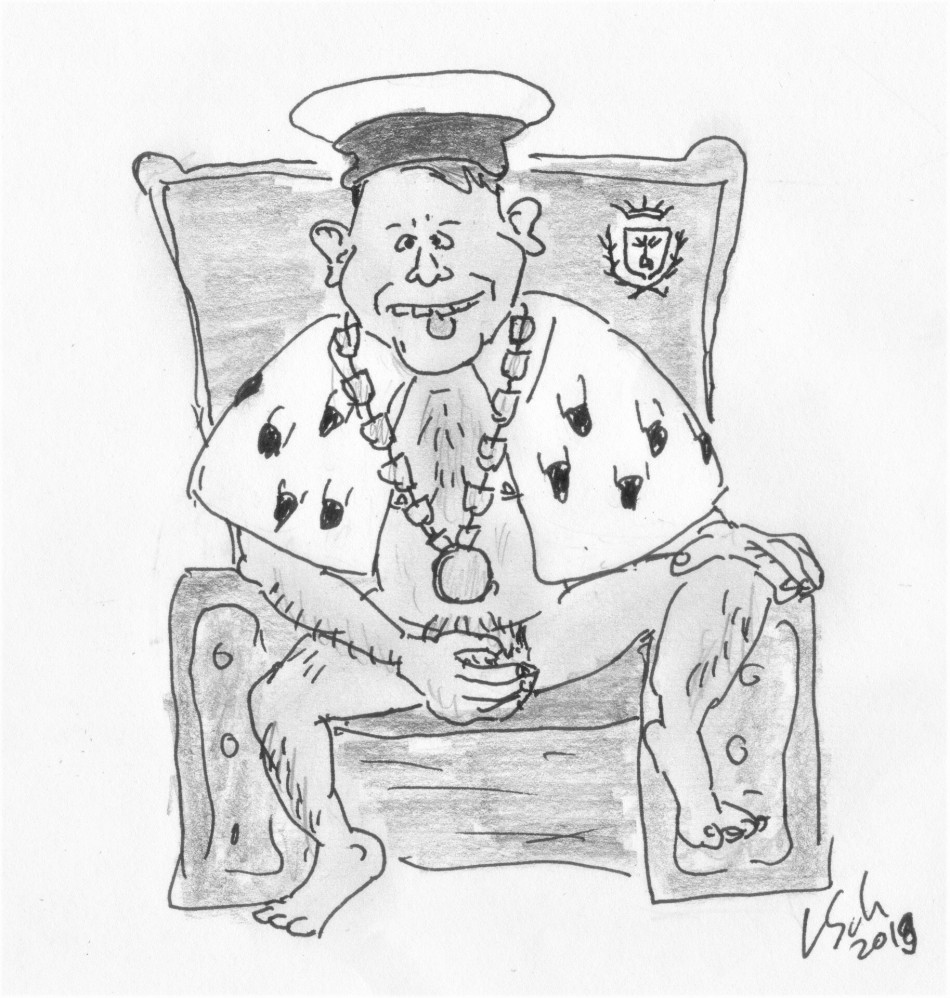
But nevertheless, the flow cytometry was clearly fraudulent. Conclusions were in danger, so the investigators proceeded to determine the “nature” of manipulations, i.e whether these were “intentional or otherwise: only in the first hypothesis, in fact, could we talk about manipulation and consider it a violation of the Code of Ethics.”
“in light of the preliminary investigations, this Commission believes it must exclude the elements of malice or serious negligence on the part of Prof. Zauli.”
Now, in many whitewashing reports same distinction is made, but even despite the alleged lack of intent the perpetrators are often found guilty of negligence, with gross negligence being deemed as research misconduct. But not in Italy.
Bologna mice guilty of research misconduct
Elisabetta Ciani uses mouse models to help children with neurological genetic disorders. Problem is: her own lab members reported Ciani for data manipulation. Records reveal that University of Bologna gaslighted the whistleblower, blamed the transgenic mice alone and fibbed the funding charities.
In Italy however, research is expected to be negligent, and the professors are specifically expected never to bother about the validity of research data they publish! In fact, Zauli is explicitly commended for just this:
“Prof. Zauli’s research team has produced, over the period affected period (1998-2009), a truly large number of international scientific publications (117 in ten years). The working methods in use at the time were certainly permeable to the involuntary clerical error, such as the exchange of files which have to be memorized in series of eight characters […]
Of particular importance is also the reaction of the scientific journals hosting the 10 publications covered by this investigation. Although all alerted by Mr. Schneider […] only one journal decided to follow up on the report, asking Prof. Zauli for explanations and then retaining them completely satisfactory […]
Peer review is the only truly decisive one in the scientific field — has therefore thus far ruled out any intentional manipulation, nor did it express any unreliability assessments regarding the scientific results of the research carried out by the Ferrara team. The data deserves adequate underlining: unlike the requested expert reports, by assignment limited to a segment of the experimental chain, referees and scientific committees of the host journals instead have a non-fragmented vision of the performed research. Their reaction or failure to react is indicative of overall endorsement of the followed methodology and the achieved scientific results.
Furthermore, the role of Prof. Zauli [….] was that of setting up the experimental design, of writing the article text (with particular reference to the introduction, results and to the discussion), to operate as an interface with the scientific journals and their referees. It was up to the other co-authors task of choosing the iconographic material to publish, generally selected by those who had physically carried out and serially repeated the experiments”
The investigators turned to moral philosophy and theology to discuss the existence of free will in fake science:
“From the ethical point of view – the only one that is relevant here Prof. Zauli’s role instead compels a different consideration. He would, in fact, be hypothetically sanctioned not for a personal, but rather for a kind of objective responsibility. Certainly relevant on a scientific level, this form of responsibility is completely foreign to the ethical plane, which requires, by its nature, the will of the subject to put in place the intentional violation of deontological rules.”
Cuzzocrea’s Magnificent Fall
“These unscrupulous charlatans in Messina should be fired on the spot tomorrow morning, forced to return twenty years of undeserved wages and sent to work the land” – Aneurus Inconstans
The investigators then proceed to roll in the dirt praising Zauli for his wisdom, goodness and graciousness, for having personally asked for this investigation as the ethics commission was already prepared to through out Schneider’s foreign notification as inadmissible.
“In conclusion, in light of all the considerations set forth above, if it can be spoken of any material errors by Prof. Zauli and his team, it was honest errors.
The Ethics Commission of the University of Ferrara, in
response to the request for opinion presented by Prof. Giorgio Zauli
(registered on 1 June 2018, Repertory no. 60/2018 – Prot.
n. 66968) does not detect any violations of the University Code of Ethics.”
And this is it. Just another whitewashing report, only more snivelling than usual. But Zauli still didn’t like it, and the circus started.
In August 2019, Zauli’s henchman the Director-General Giuseppe Galvan declared the investigation of his own university as illegal. I obtained that document also. Here it is:
By Galvan’s orders, “the Commission should have declared itself incompetent” when Zauli asked for its opinion on his 10 papers. According to Galvan, Zauli’s asking for an opinion did not grant to the ethics commission the right to open an investigation against him. The commission members were also accused of denying Zauli the confidentiality which other scientists under investigation received, by having announced the beginning of the investigation in a press release (now deleted, but I saved a translation in this article, see update 5.06.2018) and by talking to the journalist Daniele Oppo. In fact, Oppo submitted in July 2019 a Freedom of Information request for the investigative report, which the ethics commission wanted to honour. Which Galvan prevented at that time and then accused the Ethics Commission of “concrete prejudice” and “prejudicial treatment” against Zauli.
You may recall that the Ethics Commission allowed Zauli’s collaborator Gian Mattero Rigolin to remain on board, as a sign of subservience. Well, now Galvan turned this pro-Zauli conflict-of-Interest into a conspiracy against Zauli, and a reason to declare the investigation illegal.
Also, Zauli was entitled to appoint his own data integrity experts:
“…following the appointment of external experts made by the Commission pursuant to art. 7 paragraph 2 of its Regulation, it should have allowed the Rector to name his own consultant.”
and
“According to the procedure dictated by the body in minutes 2/2018, these experts should have been appointed by Rectoral Decree.”
Stop laughing you all, you are being disrespectful towards Italian universities!
Really stop laughing for a second, I have another one. Did I tell you that Galvan’s main job description is not Director-General, but…. Ready?
Head of Corruption Prevention.
Giorgio Zauli: Nazi comparisons, legal threats and totalitarian rule in Ferarra
Cancer researcher Giorgio Zauli publicly declared himself exonerated because he simply forbids his University of Ferrara to publish the investigative report. The ultra-right connected rector used the occasion to equal his critics to Nazis and to announce defamation lawsuits.
Epilogue
Zauli and his Ferrara gang have 45 fake papers on PubPeer. Several of them received Corrections and Expressions of Concern (read here). Not one was retracted – when universities threaten journals with lawsuits, there will of course be no retractions, and then litigious universities like Ferrara can claim that the journals found no manipulations in their papers.
This fake nonsense about snail mucus as therapy for wound healing was published by Zauli’s gang during the investigation in December 2018, flagged on PubPeer in February 2019, and corrected in January 2020:
Claudio Trapella , Roberta Rizzo, Stefania Gallo , Andrea Alogna , Daria Bortolotti , Fabio Casciano , Giorgio Zauli , Paola Secchiero , Rebecca Voltan HelixComplex snail mucus exhibits pro-survival, proliferative and pro-migration effects on mammalian fibroblasts Scientific Reports (2018) doi: 10.1038/s41598-018-35816-3
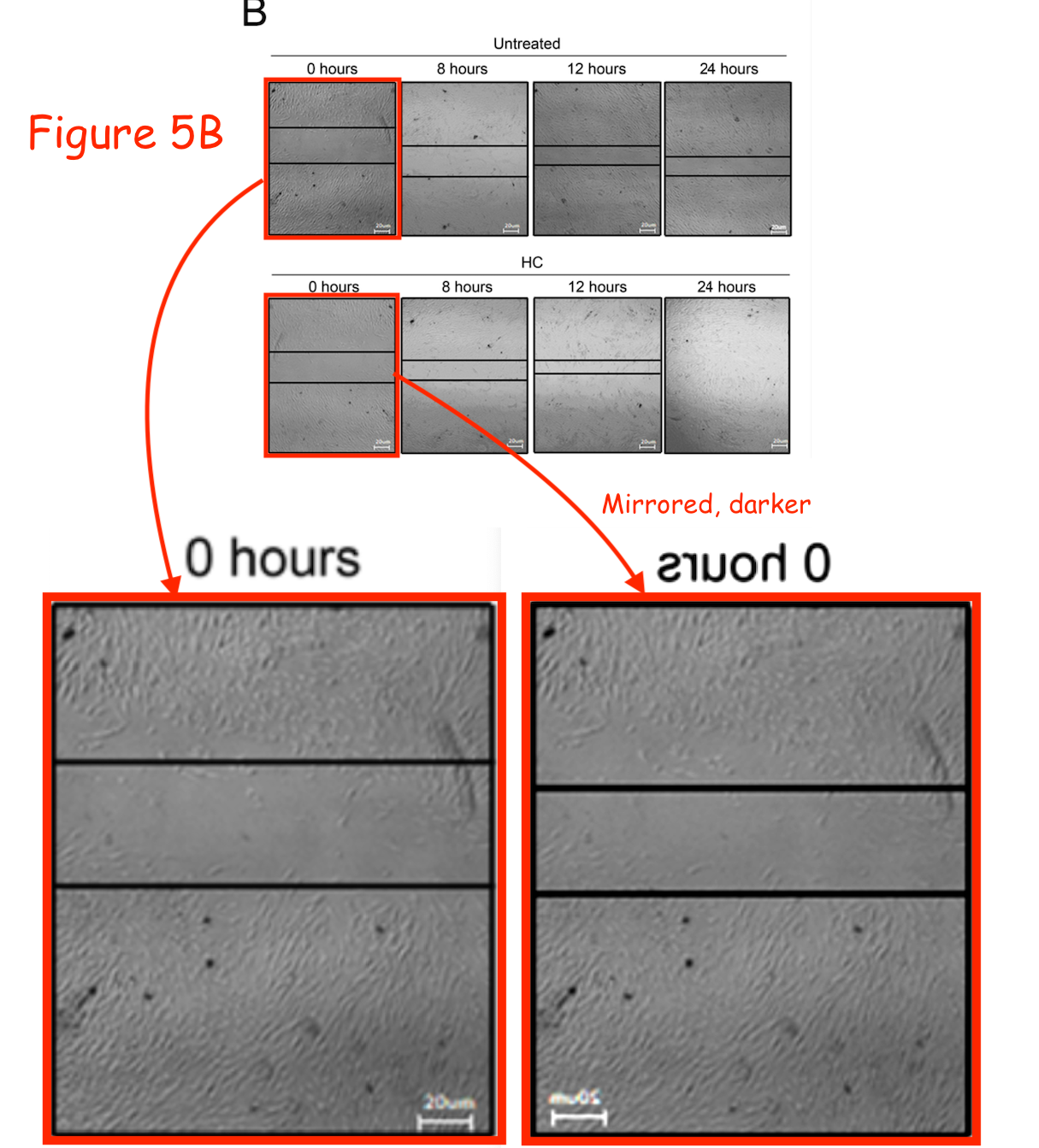
Author correction January 2020: “This Article contains an error in Figure 5b, where an incorrect image was used for HelixComplex treated samples at 0 hours.”
The Ferrara authors might need a second Correction:
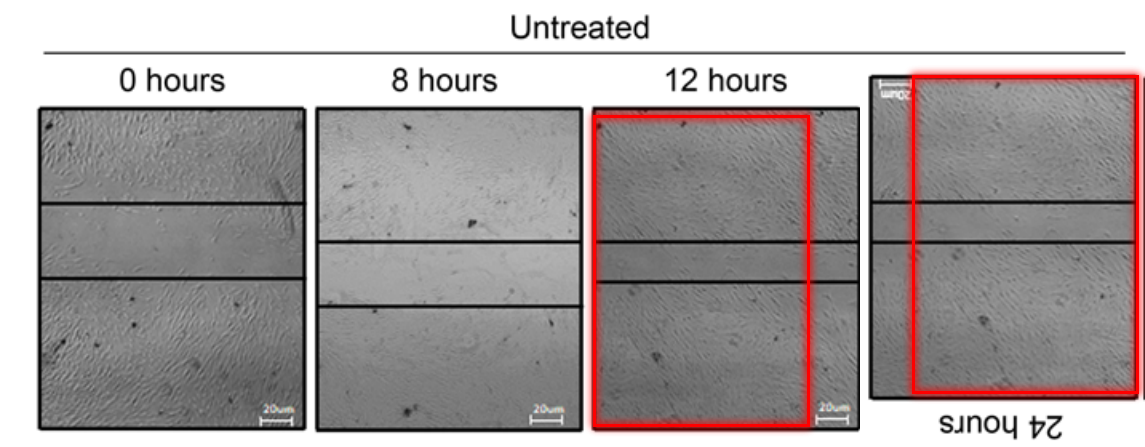
Some of Zauli’s fake stuff was co-authored by Zauli’s fellow Ferrara professors Luca Maria Neri and Silvio Capitani, who have a nasty PubPeer record of their own, read here , here, and here:
The Name of the Foes
“I am Jorge de Burgos. I believe research should pause in searching for the progress of knowledge. Right now, we don’t need more papers, we rather need more knowledge by going through a continuous and sublime recapitulation to figure out what is true and what is fake” – Aneurus Inconstans
For example, this was flagged on PubPeer already in May 2018, even before the Ferarra investigation began:
Simona Ultimo , Carolina Simioni , Alberto M. Martelli , Giorgio Zauli, Camilla Evangelisti , Claudio Celeghini , James A. McCubrey, Giorgia Marisi , Paola Ulivi , Silvano Capitani , Luca M. Neri PI3K isoform inhibition associated with anti Bcr-Abl drugs shows in vitro increased anti-leukemic activity in Philadelphia chromosome-positive B-acute lymphoblastic leukemia cell lines Oncotarget (2017) doi: 10.18632/oncotarget.15542
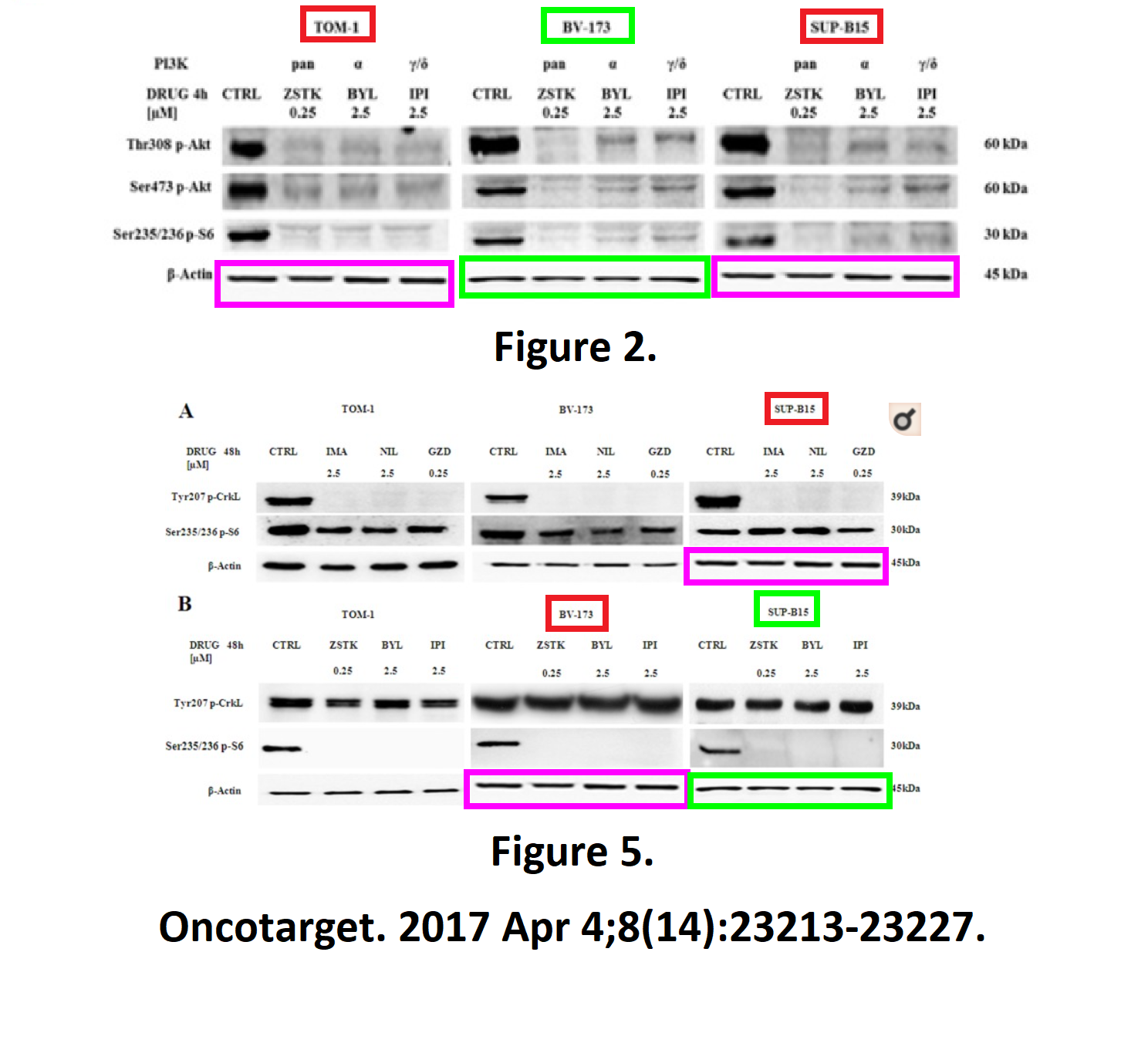

And those are just some examples from that paper, one awful paper of many.
As a local newspaper reported in January 2024, Zauli received a new leadership appointment at the Sant’Anna Hospital of the University of Ferrara. He is now Director of the Translational Medicine program, literally tasked with bringing his gang’s preclinical fraud into the clinic. Zauli is appointed for 5 years, until 30 April 2028. His mentee Roberta Rizzo (the snail mucus expert) was simultaneously installed as director of Virology and Molecular Microbiology program.
In December 2023, Zauli and his gang (Rizzo, Secchiero, Voltan, even Zauli’s ophthalmologist brother Enrico, all employed by the University of Ferrara), announced in Frontiers a cure for COVID-19, which was the cell-cycle inhibitor nutlin-3, a drug others unsuccessfully pushed for decades as cancer and anti-aging cure. I am sure the Ferrarese mafia are translating this (and the snail mucus of course) into the clinic as you read this.
The corruption, the bullying, the lawsuits, the cover-up of the massive research fraud by Zauli, Neri, Capitani and the other rotten crooks are a good reason to shut this ancient university down and let sheep graze and defecate upon its crumbling ruins for all eternity.
I thank all my donors for supporting my journalism. You can be one of them!
Make a one-time donation:
I thank all my donors for supporting my journalism. You can be one of them!
Make a monthly donation:
Choose an amount
Or enter a custom amount
Your contribution is appreciated.
Your contribution is appreciated.
DonateDonate monthly

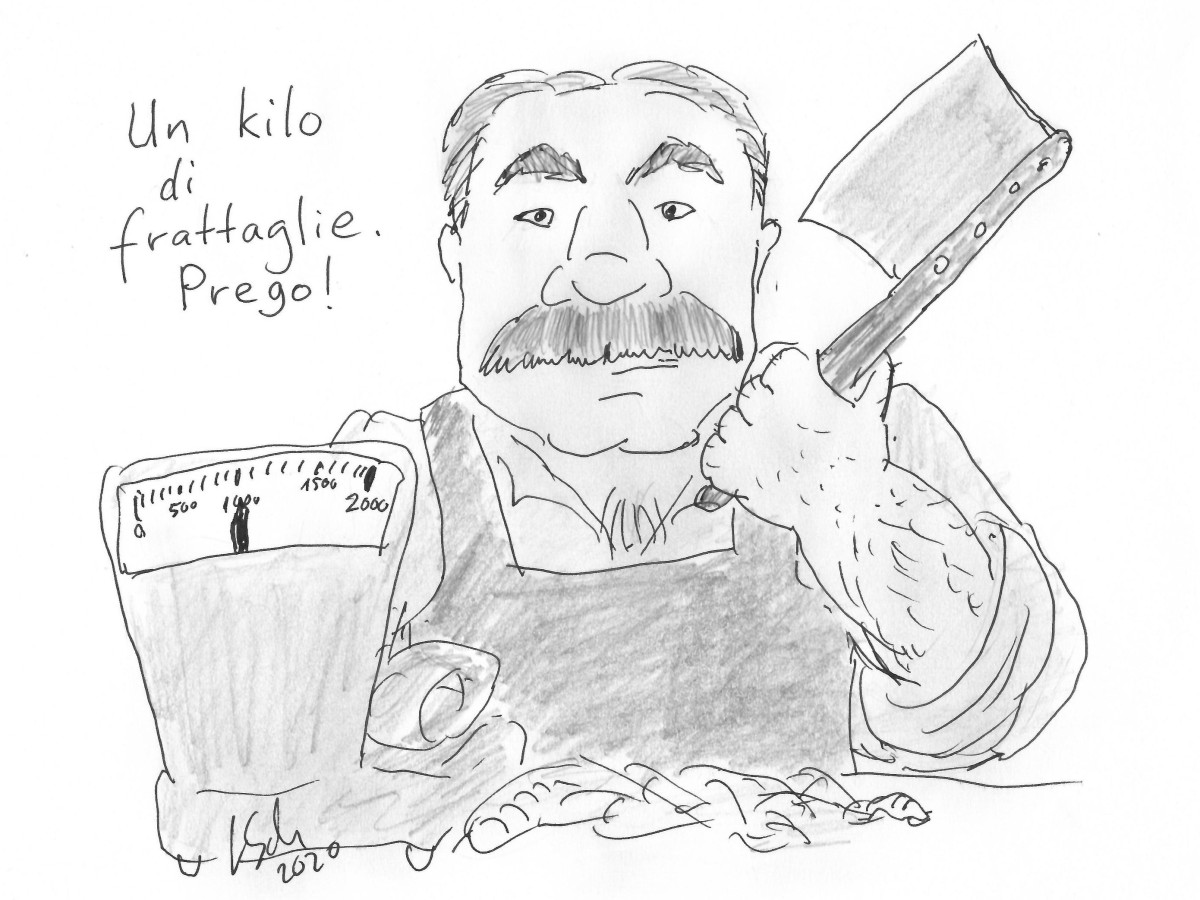




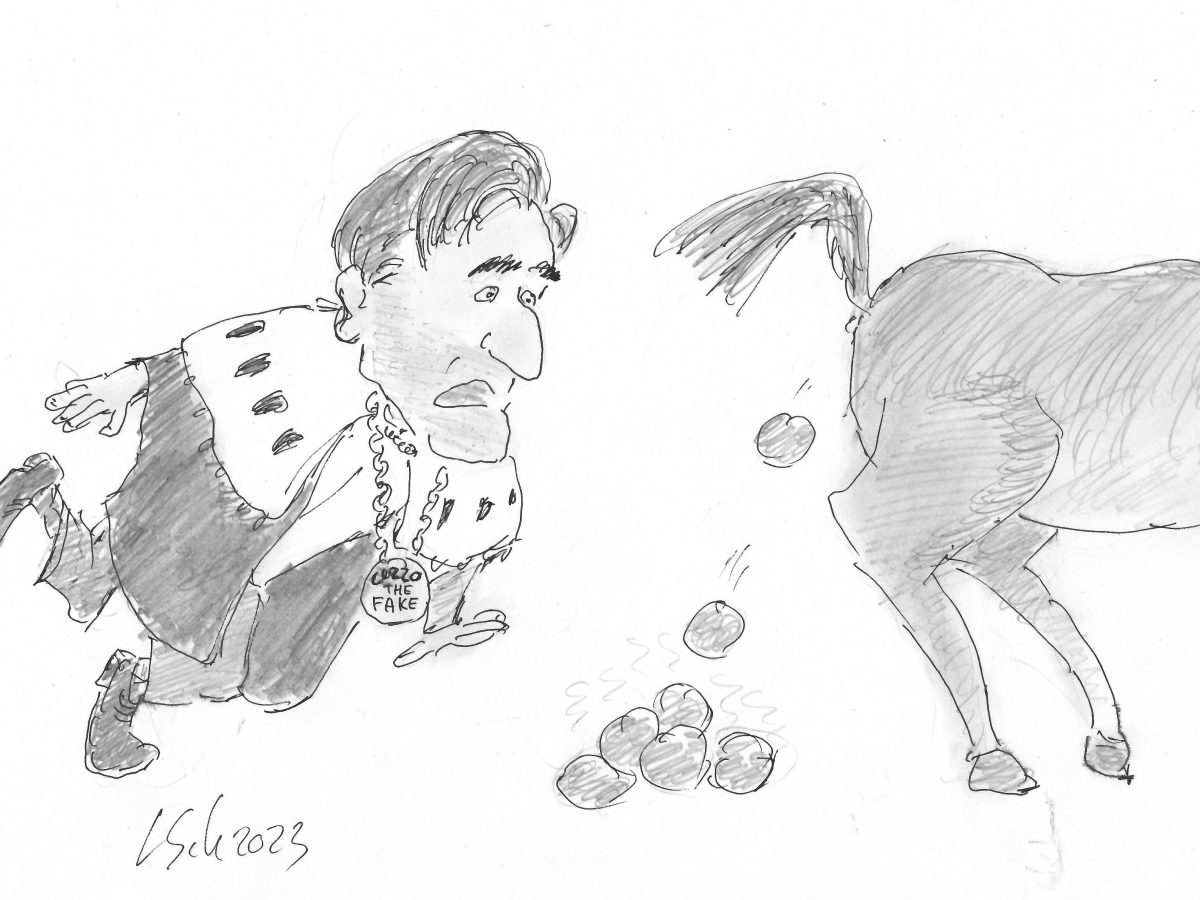



“agreed that there has probably been a duplication of the same image, due to lack of accuracy during the relative assembly, moreover, not even recognized by the magazine’s editorial office“
“not even recognized by the magazine’s editorial office“
He’s got a point there. If the gatekeepers can’t detect duplications why should the authors bother to make sure each image is unique?
LikeLiked by 1 person
<i>Prof. Zauli blames what happened to thoughtlessness and lack of accuracy in selection and assembly of the iconographic apparatus</i>
Mistakes were made. By someone else, of course.
<i>the material under examination, very dated, had been acquired with floppy disks formatted with a system (Pascal 3.22) which has long been discontinued and can no longer be used with any current instrumentation</i>
The investigators are not even competent liars (but you knew that). Pascal 3.22 was a programming environment, not an operating system. The whole philosophy of Pascal was to keep it simple, and keep it compatible – so any program written in one implementation of the language can be modified and compiled by any later version. I still use Turbo Pascal myself. Meanwhile files saved by a program written in Pascal can be opened and read by any other program.
https://www.hpmuseum.net/display_item.php?sw=370
As for floppy disks, there are always hobbyists who maintain and run obsolete desktop computers for the lols.
LikeLike
Eh, the report is invalid anyway. The Rector was supposed to appoint the external experts.
LikeLike
Are “external experts” like external drives, originally floppy though expensive, but now incredibly cheap and of enormous capacity?
LikeLiked by 1 person
Giorgio Zauli is not a very serious scientist, his extensive record of Hindawi and MDPI publications says the story.
LikeLike
Maybe that’s because of my reporting. His earlier papers were in very serious journals.
LikeLike